During this task, I got the chance to practice with some techniques I was already familiar with
and discover some I had never used before, such as scribbling and stippling.
First, I experimented with the shading techniques presented in the PowerPoint, starting with hatching:
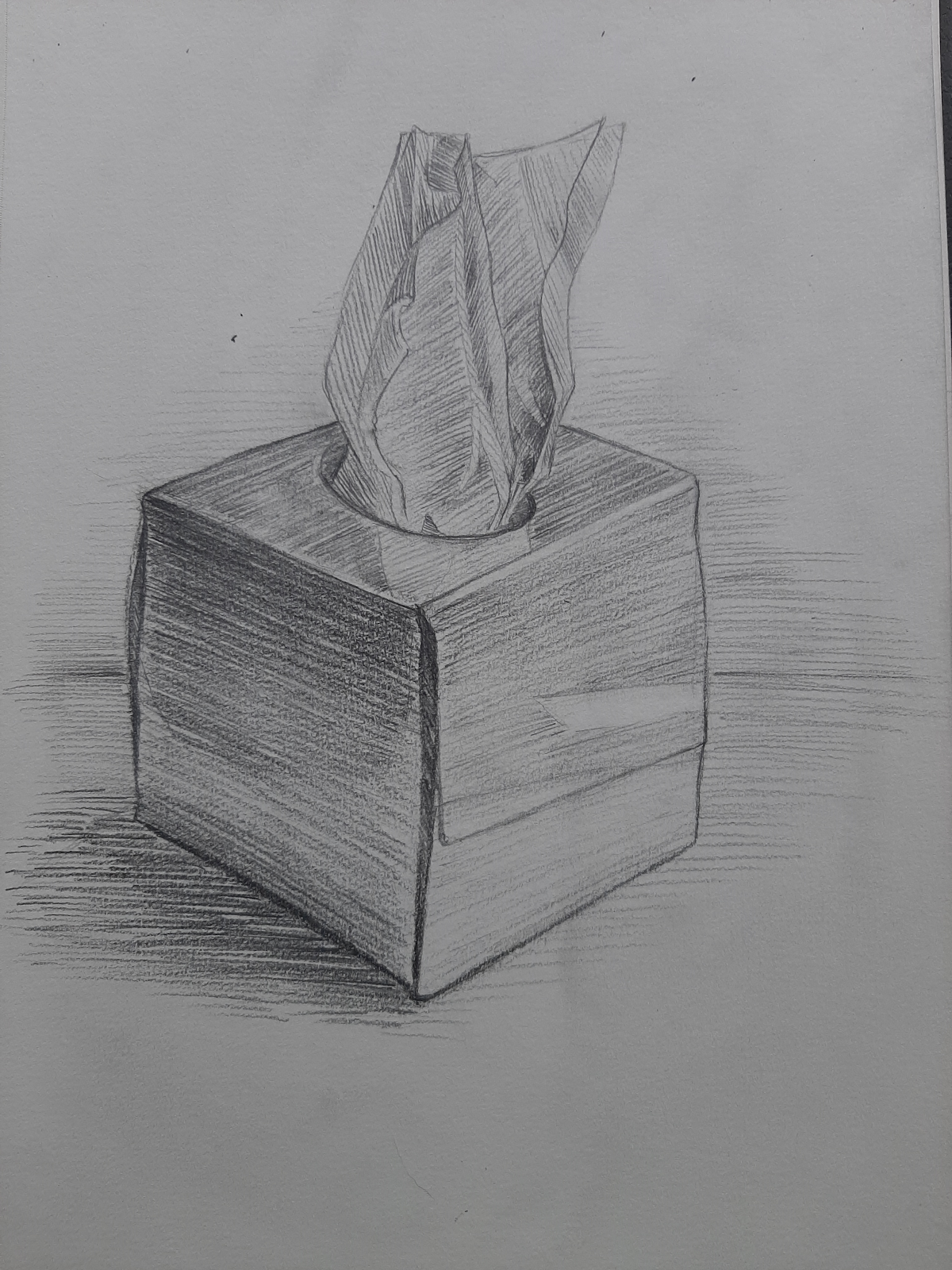
I usually use light hatching for the background of my works and go for either cross-hatching or circling for the objects, though my general process could be described as rendering. The challenge with this was keeping the hatch lines straight, as I have the tendency of curving them slightly, which is mostly obvious in the background. I find hatching very useful, but I prefer using a multitude of techniques, so I wouldn’t see myself developing a work with only this one.
Next, I tried cross hatching.

This I am even more used to than to hatching, since I use it for pen and ink drawing mostly. That’s why I chose to use ink here. The disadvantage with ink though, was the fact I couldn’t erase my mistake: the darker line in the background. Even so, since this was just me experimenting with different techniques and drawing mediums I didn’t mind it as much.
After this, I used scribbling, a technique I came to actually like in the end, despite my initial reluctance:

I admit I could have chosen the object better, but I learned from it. Now, I’m using this technique mostly for representing… fluffier materials, such as towels, plush toys, etc. Also, the symmetry in the cup is a bit off.
Next was stippling. I found it to be the easiest method, though I must say I don’t quite like it that much. Even so, I did my best to understand its uses and how to correctly represent shadow and light through it:
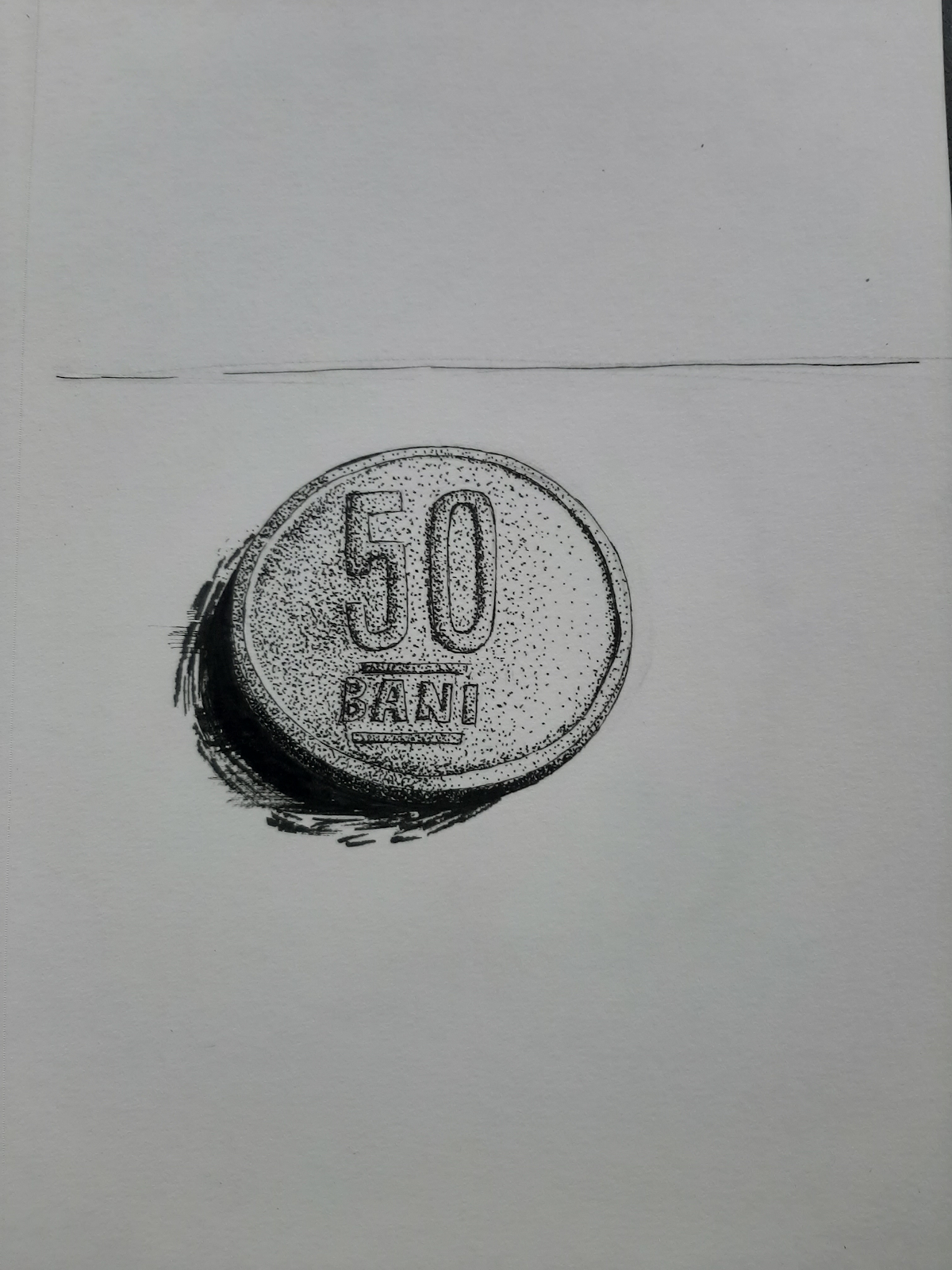
For circling, I drew a pencil case, aiming to represent the slightly rougher material it is made from:
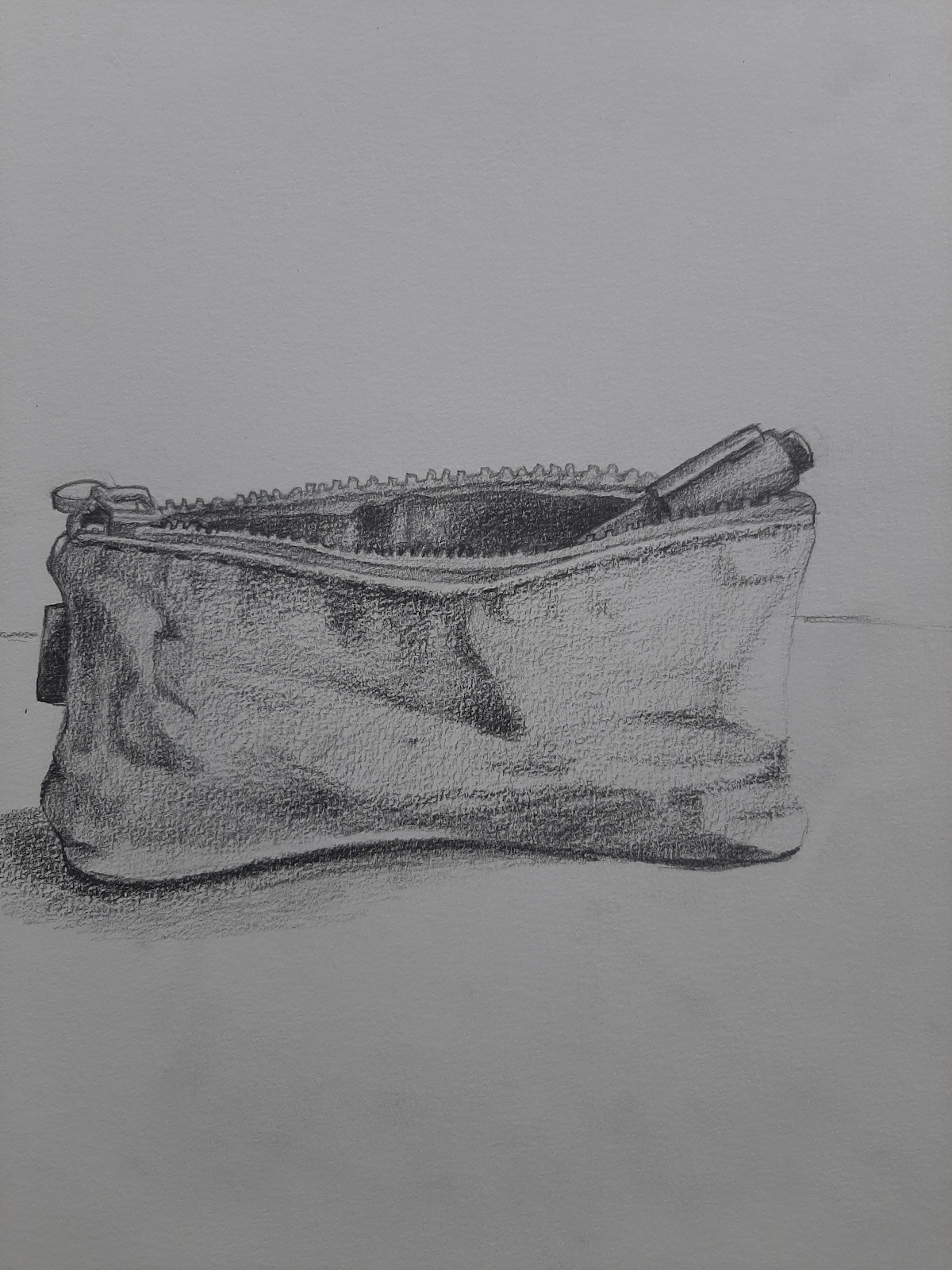
I quite like how this turned out, though the cast shadow should have been wider towards the middle of the object, since it is curving inwards.
As for smudging, I chose to draw with charcoal. With this, I had some slight problems with the ellipses.
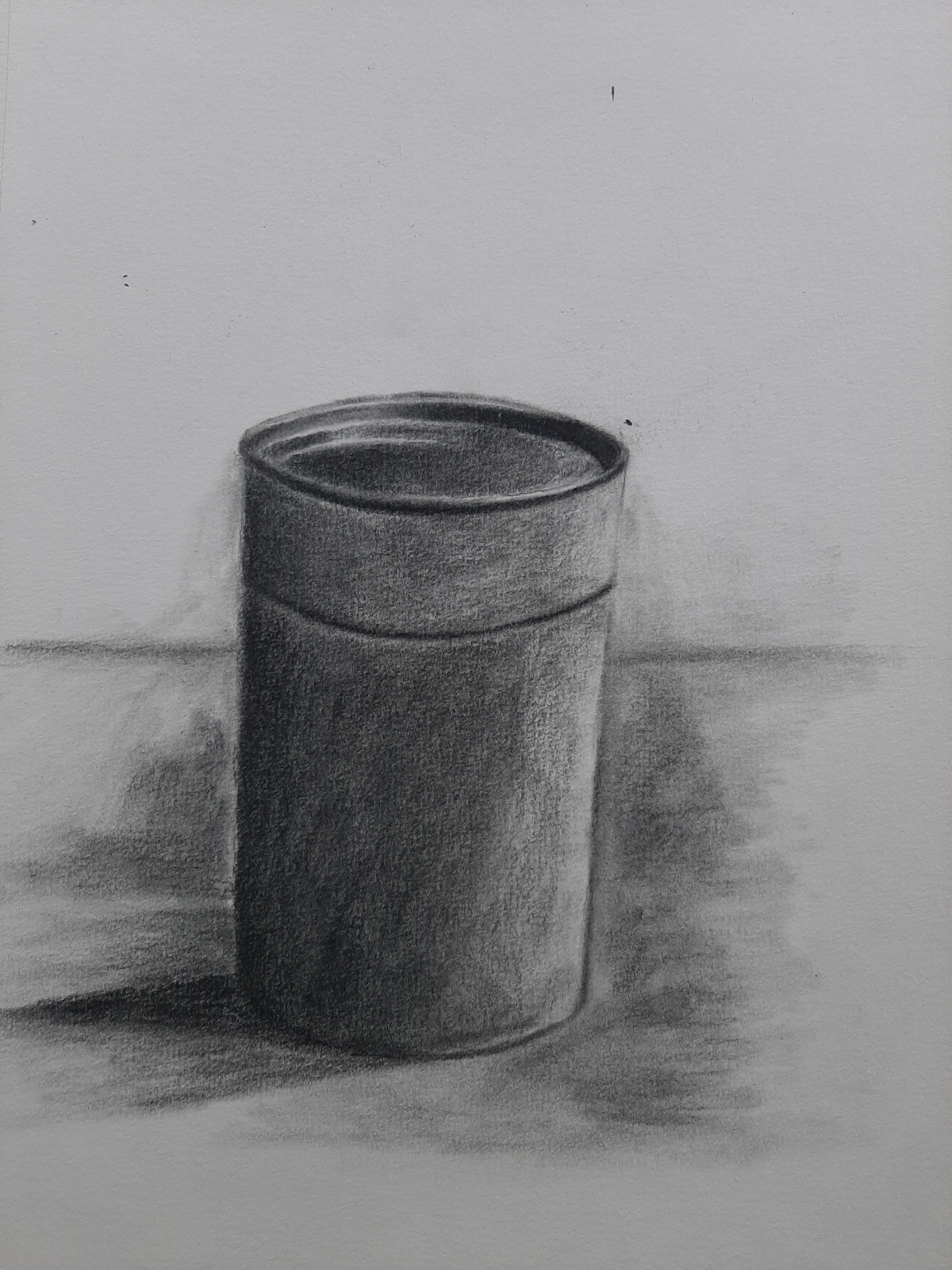
Then went on with rendering:

I think choosing a glass object for this was a good idea, though I didn’t really enjoy drawing with charcoal. It takes away some of my control over the drawing and doesn’t really let me add that many details, probably because i’m not that used to it.
After finishing the experimentation, I chose my final composition and turned the photo to grey in order to make it easier to see the values:
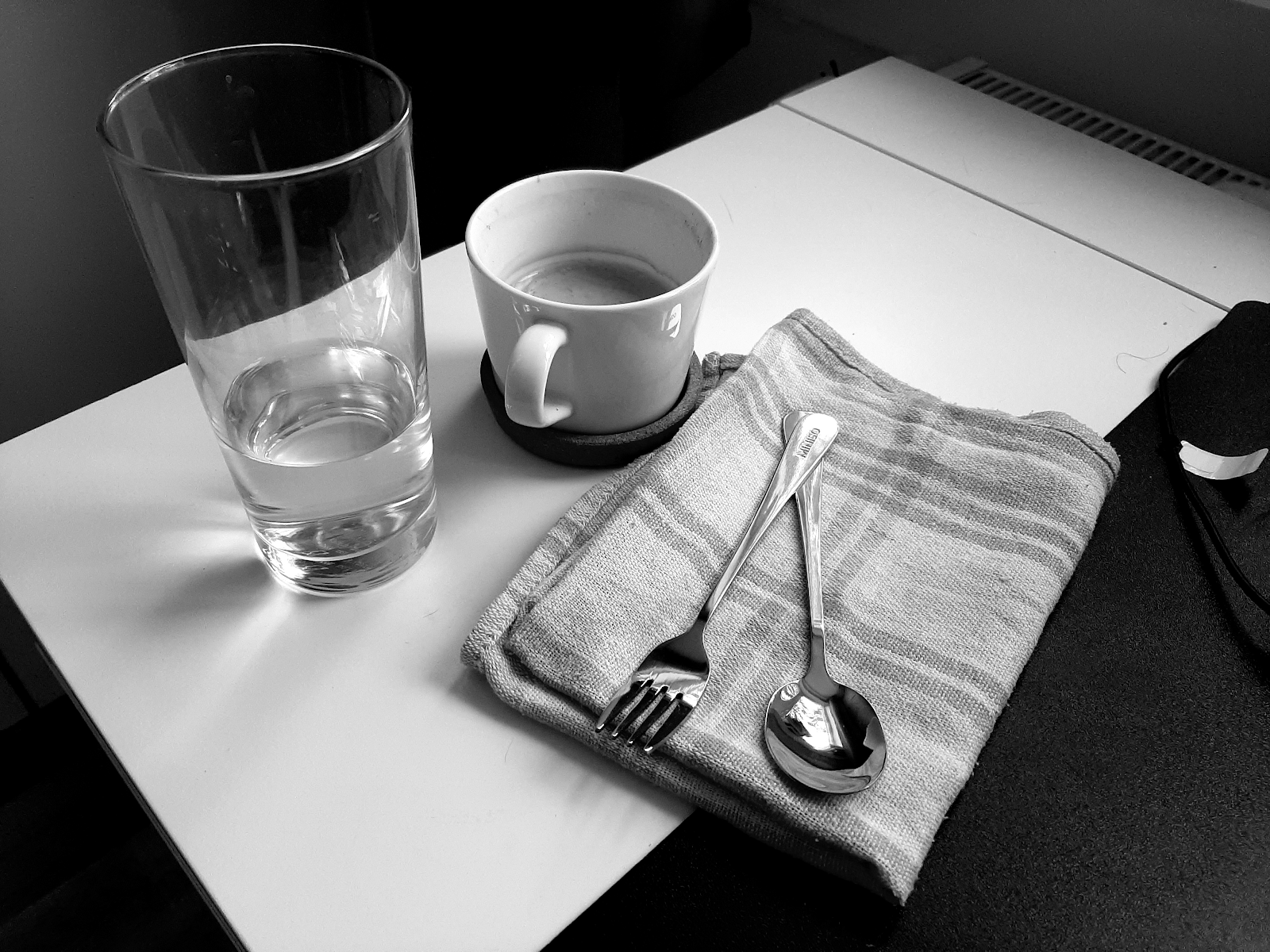
I started by constructing the objects quickly and deciding what techniques I would use: for the glass, fork and spoon I would use smudging so I could recreate the shiny surface and strong highlights, and for the coffee cup I would use hatching.
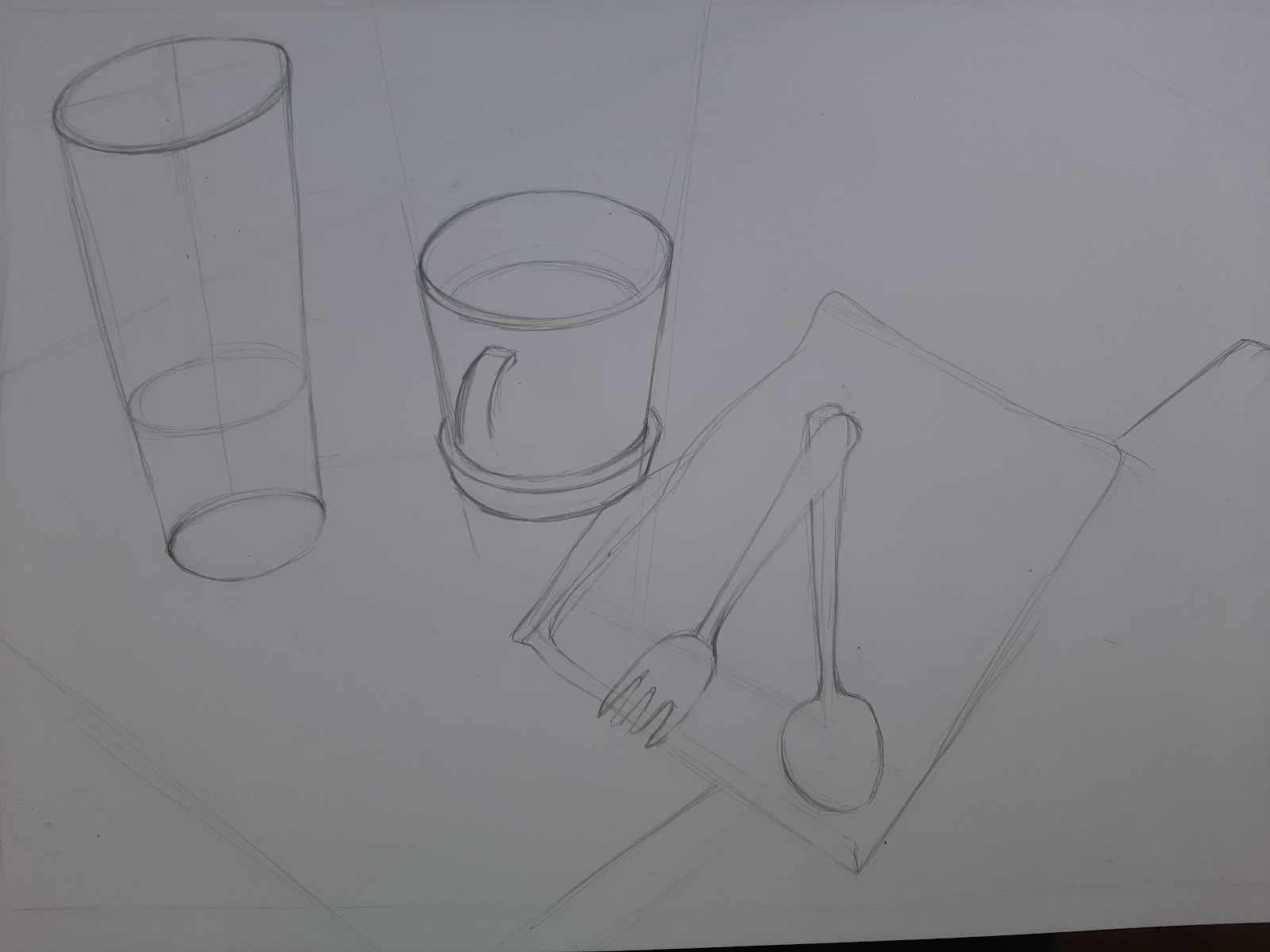
And this is the finalised work:

Looking back, I could have used more of the techniques I have experimented with, such as stippling on the towel, in order to accurately represent the texture of its surface. Overall, I really like the composition, its angle and perspective, and am very proud of how the fork and spoon ended up.



